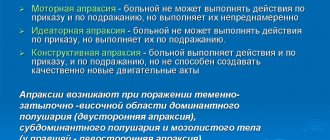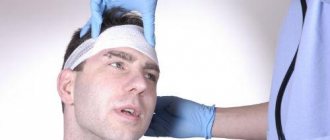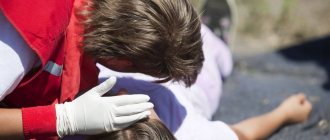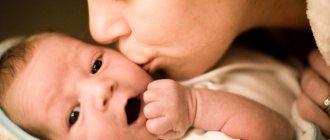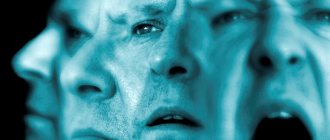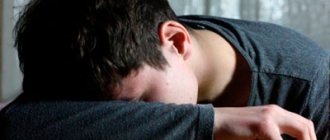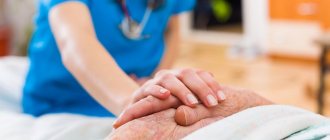Head neurosis is a mental disorder that occurs against the background of psychological overload, manifested by headaches and dizziness, which can be combined with other psycho-emotional and somatic symptoms: anxiety, restlessness, decreased performance, emotional lability, palpitations, disorders of the gastrointestinal tract and genitourinary organs.
Cost of services
| TREATMENT OF DEPRESSION, NEUROSIS | |
| NAME OF SERVICE | price, rub. |
| Consultation with a therapist (observation) | 3,000 rubles |
| Consultation with a neurologist (observation) | 3,000 rubles |
| Consultation with a psychologist | 2,000 rubles |
| Psychiatrist consultation | 5,000 rubles |
| Consultation with the head of the department | 4,500 rubles |
| CONSULTATIONS, INITIAL INSPECTION | |
| NAME OF SERVICE | price, rub. |
| Telephone consultation | For free! |
| Telephone consultation for relatives | For free! |
| Initial consultation with a psychiatrist-narcologist in a hospital | For free! |
| Initial consultation with a psychologist by phone | For free! |
| Visit of a narcologist and consultation at home | 2,000 rubles |
| Consultation with a psychotherapist, psychologist in the clinic | 2,000 rubles |
| Initial appointment, examination by a doctor, cubital catheter, ECG | 2,500 rubles |
| Consultation with a therapist, neurologist, surgeon | 3,000 rubles |
| Family consultation with a psychologist | 3,000 rubles |
| Psychiatrist consultation | 4,000 rubles |
| Consultation with the head of the department | 4,500 rubles |
| PROMOTIONS AND DISCOUNTS | |
| When applying again | 5% discount on treatment |
| Disabled people and war veterans | 5% discount on treatment |
| Large families | 10% discount on treatment |
* Dear patients! The administration tries to promptly update the price list posted on the website, but in order to avoid possible misunderstandings, we ask you to clarify the cost of services on the day of your call by calling 24/7.
The posted price list is not an offer.
Get a free consultation
+7(495) 798-30-80
Diagnostics
A medical neurologist makes a diagnosis based on the clinical picture of the disorder and the patient’s complaints.
A general examination by a therapist is also necessary to rule out other diseases (infections, intoxications, etc.).
Neurasthenia can be a symptom of brain diseases. To exclude them, the patient is sent for computed tomography (CT) or magnetic resonance imaging (MRI). In addition, a rheoencephalograph study (assessment of blood circulation in the brain) can be performed.
What causes and how do neurological headaches manifest?
Depending on the cause of the pathology, the following types of neurogenic headaches are identified:
- Pain syndrome caused by impaired blood circulation in the arteries of the brain. It often occurs in the back of the head and is pulsating and compressive in nature. Among the accompanying complaints, nausea with vomiting, severe weakness, attacks of darkening in the eyes and flashing “flies” predominate.
- Painful sensations that are provoked by prolonged tension of a certain muscle group. They are caused by a prolonged and uncomfortable position; the pain itself resembles tightening the head with a hoop.
- Pain caused by problems in the cervical spine. Infringement of nerve fibers and arteries, which is caused by pathology of intervertebral discs, tissue proliferation, osteophytes, causes severe pain.
- Hypoxic – the result of being indoors or in conditions where the air is depleted of oxygen (crowding, closed and poorly ventilated space).
- Migraine is a severe, paroxysmal headache with an unclear cause.
- Pain due to neuroses, neurasthenia, hypochondria and other mental pathologies.
Reasons for development
The cause of any neurosis is the impact of psychotraumatic factors: prolonged, mildly expressed stressful situations or one-time severe stress, lack of security, the inability to openly express feelings or implement plans, etc. If the listed circumstances exceed the mental capacity for self-healing, a breakdown in adaptation occurs, the person ceases to cope even with everyday life. loads. Predisposing circumstances are considered:
- Serious changes in life . Both negative and positive events matter. The development of a neurotic disorder can be caused by dismissal from work, the death of a loved one or family troubles, as well as a wedding, the birth of a child, or a large win in the lottery.
- Temperament type . Choleric and melancholic people are more prone to developing the disease. Stable types of temperament - phlegmatic and sanguine people - can also suffer from neuroses, but in them, due to the innate characteristics of the psyche, the disease develops with longer and more intense exposure.
- Constant overload . Large volumes of work, lack of sufficient rest, and inability to relax even on weekends gradually exhaust the nervous system and increase its susceptibility to traumatic influences.
- Other factors . Chronic intoxication and long-term somatic diseases create an increased burden on the body and predispose to the development of mental disorders.
How to get rid of neurogenic headaches
The effectiveness of treatment for neurological headaches largely depends on the correct determination of the cause and nature of the pain. Cerebral circulation disorders require the use of blood pressure normalizing agents, diuretics, sedatives, and antioxidants. Complexes selected by doctors quickly eliminate both pain and its cause. Pain caused by muscle strain is relieved by massage, physical therapy, and physiotherapy. Treatment of headaches from compression of nerves and blood vessels is carried out using painkillers. Acupuncture and manual techniques are very effective in this case. Problems caused by brain hypoxia can be eliminated by access to fresh air, room ventilation, and breathing exercises. Migraine requires treatment with a specific selection of medications and the use of laser therapy.
Treatment
Comprehensive therapeutic measures are recommended, including drug support, psychotherapy and lifestyle changes. You should review your daily routine and the amount of exercise, rest regularly, move enough, and eat well. As part of drug treatment, the following is prescribed:
- herbal remedies with a sedative effect: motherwort, valerian, peony tincture, etc.;
- painkillers, preferably those that simultaneously eliminate muscle and vascular spasms;
- anti-anxiety medications, nootropics, sleeping pills;
- vitamin and mineral complexes.
In severe cases, antidepressants are indicated. The use of these medications in various combinations helps eliminate pain, normalize muscle tone, restore sleep and appetite, and reduce the severity of emotional experiences.
The type of psychotherapeutic correction is determined by the type and severity of the cerebral neurosis and the patient’s personal characteristics. Cognitive-behavioral and psychodynamic techniques, art therapy and other areas are used. In some cases, hypnosis is effective. The following physical methods are used to reduce muscle tension:
- water procedures;
- relaxation massage;
- aromatherapy;
- reflexology;
- special manual techniques.
After eliminating the symptoms, it is necessary to follow certain rules to avoid relapse of the disease. When planning your schedule, you should leave enough time for rest, maintain moderate physical activity, regularly spend time in the fresh air, do not refuse vacations, avoid overtime, and avoid stress if possible.
Acupuncture and laser therapy used in medical treatment for various types of headaches
Acupuncture and laser acupuncture are among the most important reflexology techniques. Thanks to their effect, pain impulses are suppressed and the threshold of excitability of pain receptors increases, caused by the normalization of the balance of pain modulators and mediators: norepinephrine, opiates, serotonin. In addition, the effect on biologically active points inhibits pathological processes that contribute to the development of headaches of various etiologies: with its help it is possible to relieve pathological tension in the head muscles, dystonia of extracranial and cerebral vessels, and reduce other pathogenic processes. Acupuncture and laser acupuncture are great for:
- migraine;
- vascular headache with cerebral angiodystonia, vegetative-vascular dystonia, regional cerebral hypotension, venous hypotension, hypertension, atherosclerosis;
- muscle tension headache;
- facial pain in psychopathy.
Get a free consultation
+7(495) 798-30-80
Types of neurasthenia
The following forms of neurasthenia are distinguished:
- Hyposthenic
- characterized by increased fatigue, decreased performance, drowsiness, exhaustion; - Hypersthenic
- characterized by increased reactivity, excitability, irascibility, and difficulty falling asleep.
Sometimes a form of neurasthenia is identified that occupies an intermediate position between the hypersthenic and hyposthenic variants and is characterized by “irritable weakness.”
Headache due to neurosis and neurasthenia: treatment with psychotherapeutic techniques
A special group that requires special treatment are headaches due to neurosis and neurasthenia. The nature of neurotic pain is very diverse and presents some difficulties in diagnosis. Patients describe a wide variety of complaints, which sometimes mislead the doctor.
Treatment of headache symptoms due to neurosis and neurasthenia, in addition to drug therapy, necessarily includes techniques aimed at working through the initial neurotic conflict. In this case, both psychotherapeutic methods and psychoanalytic practice can be used to help relieve neurotic tension and identify the causes of the painful accumulation of such tension.
Our specialists have all the necessary knowledge and extensive experience to help provide effective treatment for neurological headaches in the shortest possible time! Just dial +7(495) 798-30-80!
The text was checked by expert doctors: Head of the socio-psychological service of the Alkoklinik MC, psychologist Yu.P. Baranova, L.A. Serova, a psychiatrist-narcologist.
CAN'T FIND THE ANSWER?
Consult a specialist
Or call: +7 (495) 798-30-80
Call! We work around the clock!
Other signs
Along with the listed manifestations, the following may be observed:
- decreased sensitivity and paresthesia in the extremities;
- sleep disorders: difficulty falling asleep, frequent awakenings, disturbing dreams and nightmares, early awakenings or, on the contrary, too much sleep in the morning with problems at night, daytime sleepiness;
- inability to fully relax even when very tired;
- mood swings, anxiety, restlessness, irritability, depression, inability to experience positive emotions;
- cognitive impairment, decreased intellectual abilities;
- weakness, fatigue, apathy, touchiness, tearfulness;
- tendency to get “stuck” in experiencing a stressful situation;
- causeless pain in the body;
- increased sensitivity to external stimuli: loud sounds, bright light, temperature changes;
- autonomic disorders: dyspepsia, blood pressure instability, palpitations, increased sweating;
- decreased sexual desire, sexual dysfunction;
- loss of appetite, difficulty eating due to insufficient saliva production;
- attacks of anxiety and fear not related to external circumstances.
The severity and number of symptoms vary significantly - some patients exhibit 1 or 2 symptoms from the list above, others exhibit all or almost all manifestations.
A characteristic feature is the presence of muscle tension that occurs due to constant overexertion. Their localization is determined by prevailing experiences. Hostility towards others provokes an increase in the tone of the shoulder girdles and upper limbs. Sexual problems cause tension in the muscles of the pelvis and hips. The feeling of constant tension in the head is associated with decreased self-esteem and unresolved external and internal conflicts.
Prevention
To prevent the appearance of neurasthenia, a person needs to follow a routine, rest, get enough sleep, and avoid stress. Walking before bed, taking vitamin and mineral complexes, and a change of environment have a positive effect.
A team of medical doctors will provide qualified assistance in the treatment of neurasthenia and other nervous disorders. You can make an appointment by phone or through the form on the website.
Sources:
- Bozhko S.A. Experience in the use of non-medicinal methods (psychotherapy, herbal medicine and reflexology) in the treatment of neurasthenia / S.A. Bozhko, N.A. Tyuvina // Neurology, neuropsychiatry, psychosomatics. - 2014. - pp. 19-24.
- Veltishchev D.Yu. Neurasthenia: history and modernity / D.Yu. Veltishchev // Neurology, neuropsychiatry, psychosomatics. - 2011. - pp. 9-12.
- Chutko L.S. Neurasthenia / L.S. Sensitive // Medical advice. - 2009. - pp. 23-24.
- Chutko L.S. Neurasthenia: state of the problem and approaches to therapy / L.S. Sensitive [and others] // Neurology, neuropsychiatry, psychosomatics. - 2013. - pp. 42-45.



